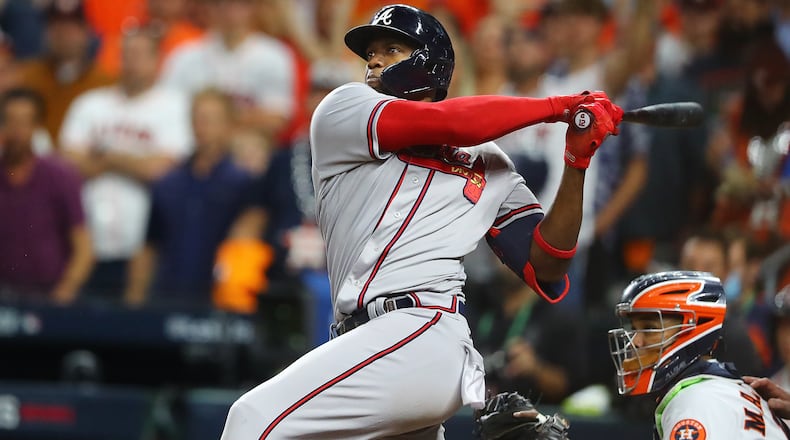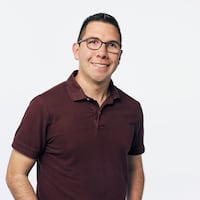Around 14 hours after the World Series ended, the Braves made the first notable move of MLB’s offseason.
The Braves on Thursday traded Jorge Soler to the Los Angeles Angels for right-hander Griffin Canning. A key point: The Braves did not send the Angels any money, which means the team is off the hook for the $26 million Soler will receive over the final two years of his contract.
This move was not surprising. Soler did not have a clear role with the Braves. He is an outfielder by position, but at this point is a designated hitter with defensive limitations. And while Soler could be a good designated hitter for the Angels, the Braves have their own because they are expected to pick up Marcell Ozuna’s $16 million option for 2025.
Over the summer, the Braves acquired Soler to boost their lineup. He did that, but with Ronald Acuña Jr. set to return from a torn ACL next season, the outfield picture also would have been crowded. Soler, often a liability in right field, became positionless for the Braves, who did not need him next season.
So if you follow this team closely, you probably began to wonder: How will president of baseball operations and general manager Alex Anthopoulos find a suitor for Soler? He did that – and did it in the best way possible.
The biggest win in this deal: The Braves didn’t have to pay the Angels any money to take on Soler. This frees up $13 million from the 2025 cash payroll figure, which should give Anthopoulos some added flexibility as he addresses the club’s needs.
The Braves also get Canning, a 28-year-old starter who has a 4.78 ERA over 99 career games (94 of them starts). Canning is entering his last season before free agency.
His best season probably came in 2023, when he posted a 4.32 ERA over 24 games – 22 of them starts. In that year, he struck out 139 batters and walked only 36 over 127 innings. The Braves will try to get Canning back to 2023 form – if he’s on the roster next season.
Canning, who is arbitration-eligible, made $2.6 million this year. Arbitration is designed to give players raises, and the Braves could, in theory, non-tender Canning to save even more money to use for their needs. MLB Trade Rumors, which provides respected arbitration predictions, projected Canning to earn $5.1 million in 2025. This might be too steep for someone who may not be a lock for the starting rotation. (The deadline for teams to tender contracts to players is Nov. 22.)
After the trade, Soler hit .243 with an .849 OPS for the Braves. He had 11 doubles, nine home runs and 24 RBIs. He went 2-for-7 with a home run in the two wild-card games in San Diego.
When the Braves acquired Soler, he hadn’t yet played an inning in the outfield for the Giants. In 326 innings in the outfield for the Braves, Soler posted minus-10 Defensive Runs Saved, which means he cost the Braves 10 runs compared with the average outfielder. The eye test backed up this metric, which is only one of multiple that evaluates defense.
If Ozuna were not on the Braves, perhaps they would’ve kept Soler. If Soler’s defense were average, maybe they would’ve carried him next season – even with his relatively high salary. But neither of those are the case, and the circumstances left the Braves without a use for Soler. Anthopoulos found a trade partner in good friend Perry Minasian, the Angels’ general manager who formerly worked in the Braves’ front office.
And remember this: You cannot judge this trade based on what happens with Canning. The Braves were able to deal Soler without eating any money, and that’s probably a victory alone.
Credit: AP
Credit: AP
Now, Anthopoulos can move through the rest of his offseason. He has option decisions on Ozuna, Travis d’Arnaud ($8 million), Aaron Bummer ($7.25 million) and Luke Jackson ($7 million). In his Zoom call after the Braves were eliminated, Anthopoulos said Ozuna, d’Arnaud and Bummer had put themselves in a good spot to return. And Anthopoulos didn’t say this, but the Braves almost certainly will decline Jackson’s option.
Anthopoulos will be at the General Managers Meetings from Tuesday-Thursday of next in San Antonio. The option decisions must come by Monday, along with extending a qualifying offer to Max Fried. There probably won’t be as much activity in San Antonio as there will be at the Winter Meetings in December.
The Braves started by trading Soler.
Entering the offseason, it seemed the question was not whether the Braves would employ Soler in 2025, but how they would find him a new home this offseason.
About the Author
Keep Reading
The Latest
Featured




